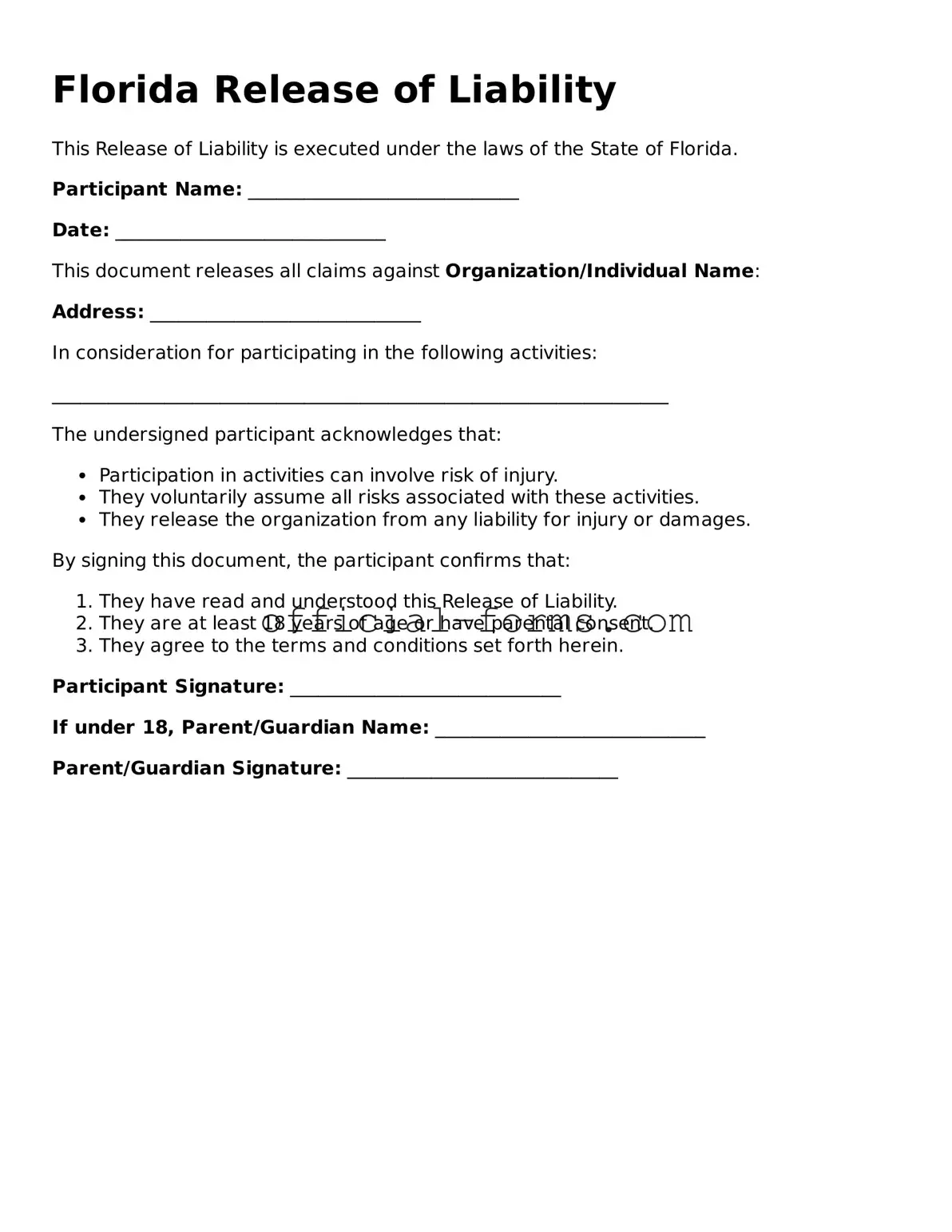Filling out the Florida Release of Liability form can be straightforward, but many individuals make common mistakes that could lead to complications later. One frequent error is failing to read the entire document before signing. This oversight can result in misunderstandings about the rights being waived. It’s crucial to understand what you are agreeing to, as this form often relinquishes your right to sue for injuries or damages.
Another common mistake is not providing complete and accurate information. Whether it’s your name, address, or details about the activity, any inaccuracies can invalidate the release. Take time to ensure that all sections are filled out correctly. Omitting information can create confusion or legal loopholes that may be exploited later.
People often forget to date the form. A missing date can lead to questions about when the release was signed, which can be critical if a dispute arises. Always double-check that the date is clearly indicated. This simple step can save a lot of trouble down the line.
Additionally, some individuals neglect to have the form witnessed or notarized when required. Depending on the circumstances, a witness may be necessary to validate the document. If the form lacks a witness signature when one is needed, it might not hold up in court.
Another mistake is misunderstanding the scope of the release. Many people believe they are only waiving liability for certain risks, but the language in the form can be broader than anticipated. It’s important to read carefully and consider the full implications of what is being released.
Failing to ask questions is another pitfall. If there is anything unclear about the form, it’s essential to seek clarification. Ignoring confusion can lead to unintended consequences. Don’t hesitate to reach out to a legal expert or the party providing the release for further explanation.
Some individuals also overlook the importance of keeping a copy of the signed form. After signing, it’s wise to retain a copy for your records. This can be crucial if any disputes arise later, as you will have proof of what you agreed to.
Finally, people sometimes rush through the process, especially if they feel pressured to sign quickly. Take your time to review the form thoroughly. Rushing can lead to mistakes that could have been easily avoided. A careful approach can help ensure that the release serves its intended purpose without complications.
